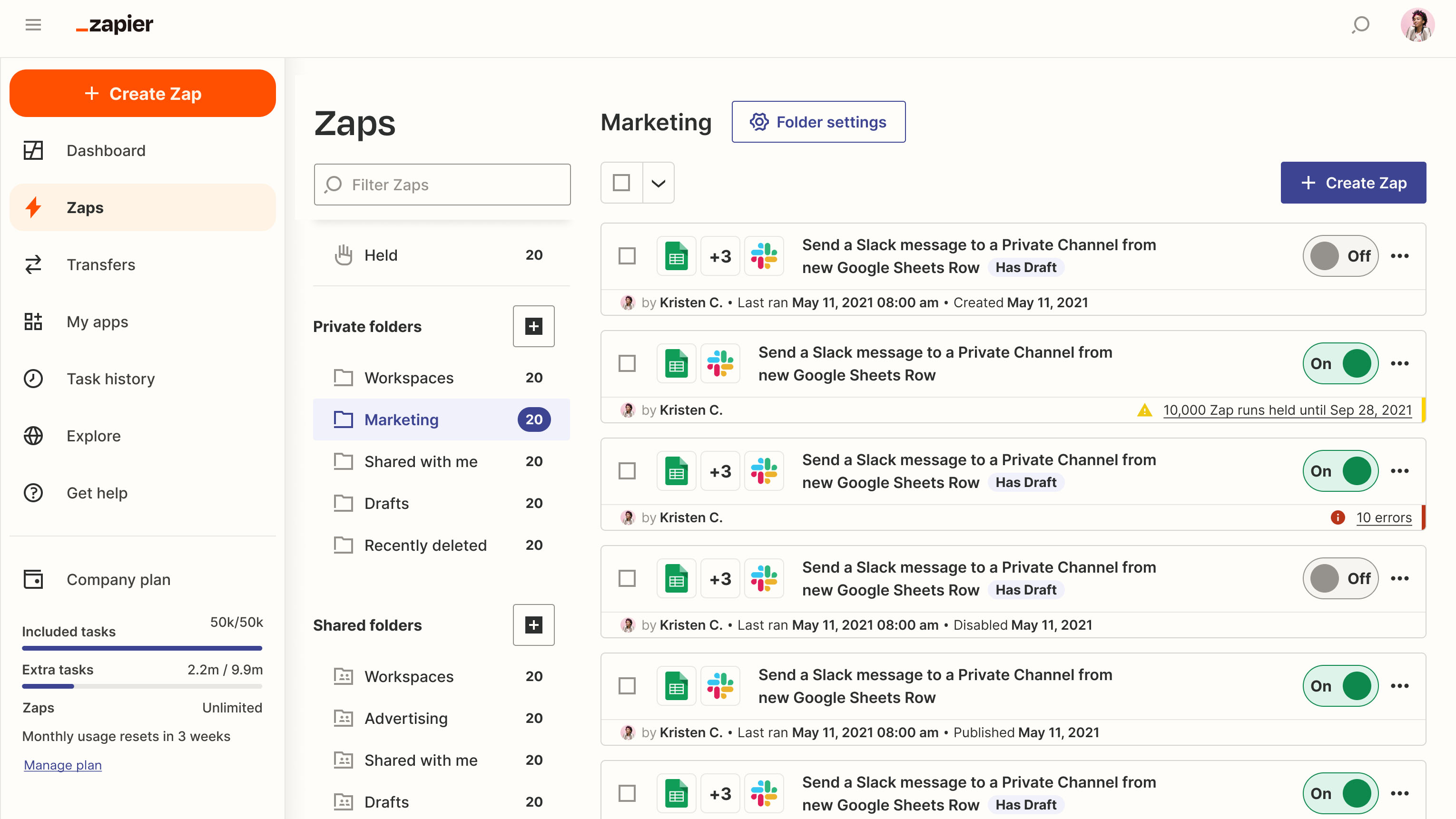
Unleashing the Power of Automation with Zapier: A Deep Dive into Seamless Integration
Estimated reading time: 7 minutes
Key Takeaways
- Zapier automates tasks by creating *Zaps* across 7,000+ apps—no coding required.
- Its triggers and actions handle repetitive workflows *instantly* or via polling.
- You can build **multi-step Zaps** and conditional logic to handle complex processes.
- Seamless data mapping keeps information flowing smoothly between apps.
- Pricing is task-based, so watch for large-scale usage costs.
Table of Contents
What is Zapier?
In the fast-paced digital world, efficiency is the cornerstone of success. Enter **Zapier**, a revolutionary web-based automation tool that seamlessly connects over 7,000 apps, allowing users to create automated workflows, aptly named “Zaps”. These Zaps perform tasks automatically across these integrations, all **without the need for a single line of code**. The essence of Zapier lies in its ability to set up triggers (events) and actions (tasks) that work harmoniously to automate routine processes, thereby enhancing productivity and streamlining operations (source: Zapier Glossary, Vendr Blog).
Key Concepts and How Zapier Works
- Zap: A Zap is an automated workflow that consists of one trigger and one or more subsequent actions. Each time the trigger event takes place, the designated actions are executed (source: Zapier Glossary).
- Trigger: This is the starting point of a Zap. A trigger might be set off by new or updated data detected through polling an API or via instant webhooks pushed to Zapier (source: Zapier Glossary).
- Action: Following a trigger, an action is an operation carried out in another app via API calls. These actions might include creating, finding, or updating data (source: Zapier Glossary).
- Tasks: Each successfully completed action in Zapier counts toward a user’s task usage, which is tied to their subscription plan (source: Zapier Glossary).
- App coverage: Zapier boasts an impressive repertoire, supporting integrations with thousands of widely-used services like Slack, Gmail, Salesforce, Trello, and Mailchimp (source: Vendr Blog).
Core Features of Zapier
- Multi-step Zaps: Zapier enables the chaining of multiple actions triggered by a single event, allowing the construction of complex workflows (source: Vendr Blog).
- Filters and Conditional Logic: Workflows can proceed only under specific conditions, or branch into different pathways for varied outcomes (source: Vendr Blog).
- Data Mapping and Formatting: With Zapier, users can map and transform data fields between triggers and actions, ensuring seamless data flow (source: SerpApi Blog, Exploring Google BigQuery).
- Webhooks: These provide the capability to send or receive data via HTTP endpoints, widening the scope of automation beyond native app integrations (source: Vendr Blog).
- Templates: Zapier offers pre-designed, customizable Zaps which help users get started quickly and efficiently (source: Vendr Blog).
Practical Applications of Zapier
- Email to Spreadsheet: Automatically transfer details from new Gmail messages into a Google Sheet (source: Vendr Blog).
- Weekly Data Collection: Set up a schedule to fetch data, process it, and log it into Sheets every week (source: SerpApi Blog, Exploring Google BigQuery).
- Audience-Tailored Updates: Extract articles, summarize them using AI by Zapier, and send personalized updates via Slack (source: Zapier Blog).
- Task Reminders: Find open tasks in Asana, loop through them, and send reminders directly to assignees on Slack (source: Zapier Blog).
When to Use Zapier
Use Zapier whenever you need to automate tasks across apps that do not have direct integrations, desire complex workflows with conditional logic, or simply want to boost efficiency *without coding*. It streamlines processes—whether you’re a small business owner, a project manager, or a tech enthusiast (source: Vendr Blog, Zapier Glossary, Exploring Google BigQuery).
Notable Limitations and Considerations
While Zapier’s capabilities are extensive, task-based pricing can add up in high-volume workflows. Furthermore, polling triggers may introduce slight delays, unlike **instant webhooks** which offer near-real-time data flow (source: Zapier Glossary, Dorik Blog, Exploring Google BigQuery).
Advanced Patterns to Explore
For those seeking deeper automation, exploring Zapier’s AI features, webhook capabilities, and code steps unlocks new possibilities. These features enable highly customizable, dynamic workflows that cater to precise business needs (source: Zapier Blog, SerpApi Blog, Vendr Blog, Exploring Google BigQuery).
Conclusion
Zapier stands out as a *formidable ally* in the automation landscape, harnessing technology to foster better integration and streamlined processes. Whether you’re just starting your automation journey or aiming to refine existing workflows, **Zapier** offers a robust platform designed to elevate your operational efficiency. Embrace the art of automation with Zapier and discover the ease of working *smarter*, not harder.
FAQ
Q: Is Zapier free to use?
A: Zapier offers a free plan with limited tasks and features. For higher-volume usage and advanced functionalities, you’ll need a paid plan.
Q: Do I need coding skills to set up a Zap?
A: No coding is necessary for most Zaps. Zapier’s user-friendly interface allows you to connect apps and set up triggers and actions with a few clicks.
Q: How reliable are Zapier automations?
A: Millions of users rely on Zapier daily. While rare glitches can occur, Zapier generally provides consistent performance and logs for easy troubleshooting.
}